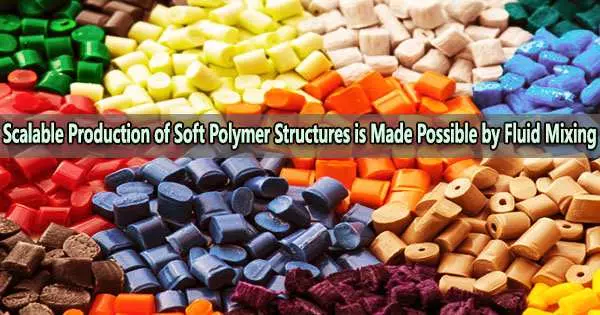Researchers have developed and shown an efficient and scalable approach that allows them to make soft polymer materials in a dozen various forms, or “morphologies,” from ribbons and nanoscale sheets to rods and branched particles. The method enables users to precisely control the materials’ morphology at the micro- and nanoscales.
“This advance is important because the technique can be used with a wide variety of polymers and biopolymers. Since the morphology of these polymeric micro- and nanostructures is critical for their applications, it allows us to obtain new polymer functionalities by simply controlling structure instead of polymer chemistry,” says Orlin Velev, corresponding author of the paper and the S. Frank and Doris Culberson Distinguished Professor of Chemical and Biomolecular Engineering at North Carolina State University.
“For example, the nanosheets can be used in designing better batteries, whereas dendricolloids branching networks of polymer fibers that have exceptionally high surface area can be used in environmental remediation technologies or creation of novel lightweight metamaterials.”
Essentially, polymer precipitation a well-known procedure is used to create all of the various morphologies. In this process, a polymer is dissolved into a solvent, producing a polymer solution. A second liquid is then added to the polymer solution, causing the polymer to recombine as soft matter.
Here’s what’s novel: by adjusting three sets of parameters throughout the manufacturing process, the researchers were able to accurately regulate the structure of the final polymer soft matter.
We are currently working with food science researchers to determine how protein microrods could be used to control the texture of some food products. And we are also working with collaborators to explore how our technique can be used to produce biopolymer-based materials for use in biodegradable soft electronics. We are open to working with additional collaborators to explore potential applications for the polymers and biopolymers across all of these morphologies.
Orlin Velev
The shear rate, or how quickly the two liquids are churned together when they are mixed, is the first set of factors. The second set of parameters is the concentration of the polymer in the polymer solution.
The final set of parameters includes the chemical makeup of the solvent used to dissolve the polymer initially and the liquid to which the polymer solution is added.
“We identified the critical parameters that affect the final morphology of the polymeric materials, which in turn gives us a great deal of control and versatility,” says Rachel Bang, first author of the paper and a recent Ph.D. graduate from NC State. “Because we now understand the role of each of these factors and how they all influence each other, we can reproducibly fine-tune the polymeric particle morphology.”
“Even though we have demonstrated how to produce a dozen different morphologies, we are still in the early stages of exploring all of the possible outcomes and applications,” Velev says.
The ability of the dendricolloids to produce hydrophobic or hydrophilic coatings as well as membranes for growing living cells has already been established by researchers. The possibility for using the nanosheets as more effective separators in lithium-ion batteries has also been shown by the researchers’ work with collaborators.
“The technique can also be used with a variety of natural biopolymers, such as plant proteins, and it could be used to support a variety of applications, such as the development of plant-based meat analogues, which requires precise control of protein particle morphologies at multiple length scales,” adds co-author Prof. Simeon Stoyanov of the Singapore Institute of Technology and Wageningen University in the Netherlands. “In addition, because our technique is based on mixing liquids using conventional mixers, it can be easily scaled up for practical manufacturing.”
“We are currently working with food science researchers to determine how protein microrods could be used to control the texture of some food products,” Velev says. “And we are also working with collaborators to explore how our technique can be used to produce biopolymer-based materials for use in biodegradable soft electronics. We are open to working with additional collaborators to explore potential applications for the polymers and biopolymers across all of these morphologies.”
NC State has issued or pending patents on the shear fabrication of microrods, nanofibers, dendricolloids and their application in electrochemical energy sources.
This work was accomplished with support from the National Science Foundation’s Nanomanufacturing Program, under grant CMMI-1825476. The work received additional support from NSF under grants EFMA-2029327 and CMMI-2134664.





